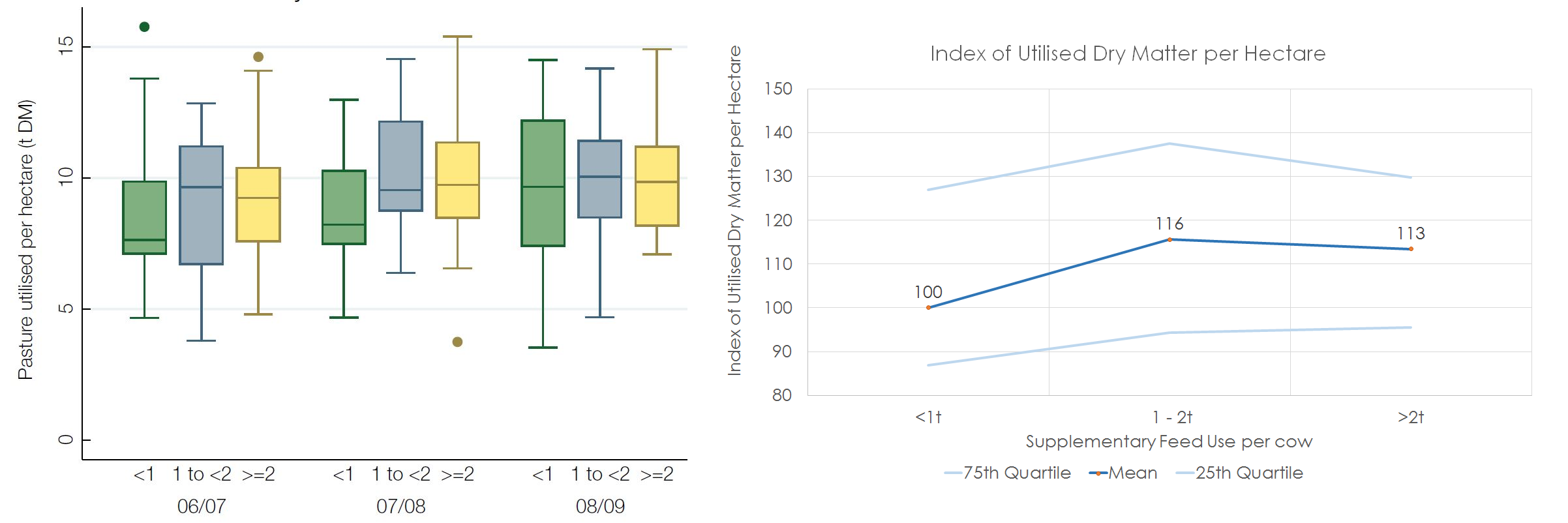Dairy businesses are varied and complex and to get the best out of them we need to know which levers to pull on each farm, as no one solution fits all.
A classic example is the debate about using supplements, where oversimplified statements are made about how much to spend. Even feeds at $1,000/t have a place in a diet if they make the whole diet work in a cost efficient way. Producers should focus on the specification of the diet, its cost per cow and the margin that it gives. For example, a diet that costs $4.00 per day and earns $8.00 is better than one that costs $3.00 and earns $6.00.
As shown in the chart below from Dairy Australia’s TasMIlk60 project, using more feed per cow does not necessarily mean less utilisation of pasture per hectare.
 The chart shows three levels of feed; <1.0t, 1.0-2.0t and >2.0t, over three seasons. The box plots are the original data from Dairy Australia showing the range across three seasons. The right hand chart simplifies this data by indexing the data (Mean of <1t = 100) and averaging it across the years just looking between the 25th and 75th quartile. It is easier to see that feeding more supplement per cow doesn’t automatically result in less pasture utilised and in fact shows higher utilisation.
The chart shows three levels of feed; <1.0t, 1.0-2.0t and >2.0t, over three seasons. The box plots are the original data from Dairy Australia showing the range across three seasons. The right hand chart simplifies this data by indexing the data (Mean of <1t = 100) and averaging it across the years just looking between the 25th and 75th quartile. It is easier to see that feeding more supplement per cow doesn’t automatically result in less pasture utilised and in fact shows higher utilisation.
Smart farmers make sure that grazing pressure is relative to the supplementation and that a well balanced diet and good grazing management result in a high level of utilisation and good Feed Conversion efficiency.
To check your Utilised Dry Matter per Hectare use Dairy Club’s calculator which can be found here.
Substitution rate is of far less relavence in practice than in academia. By using good management (using fences etc), good cows, dense swards, balanced diets etc. we can minimise the effect of this on farm. So rather than shying away from gaining the benefits of a wide range of supplementary feeds, build your skills to help you make them work for you and keep your production and profit on track on your own farm. Dairy Club has information, training, tools, planning and monitoring systems to help you.
